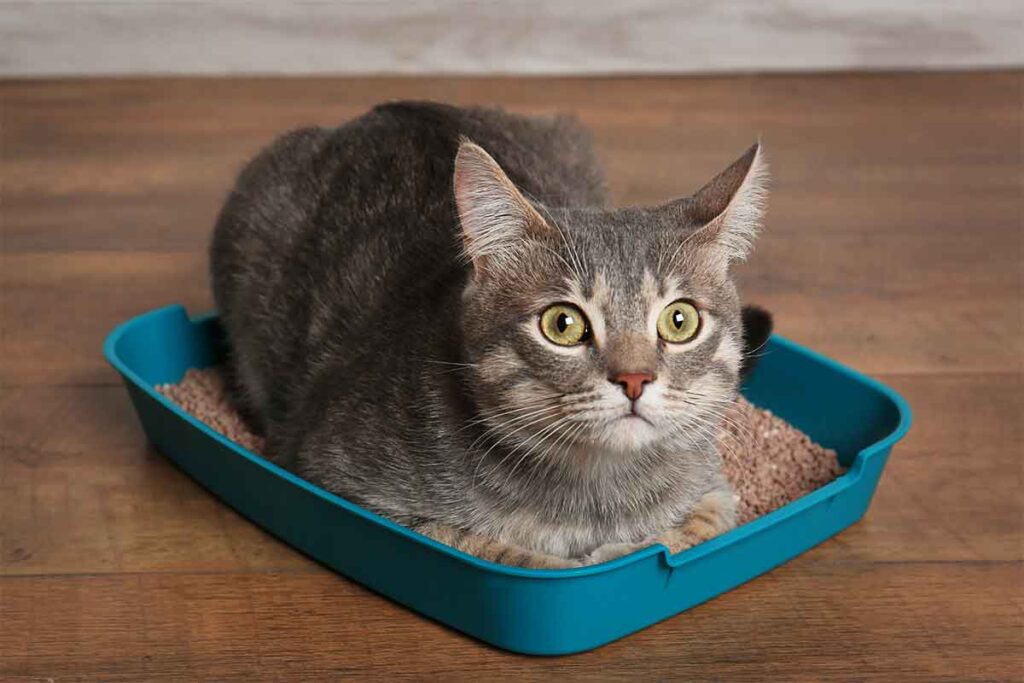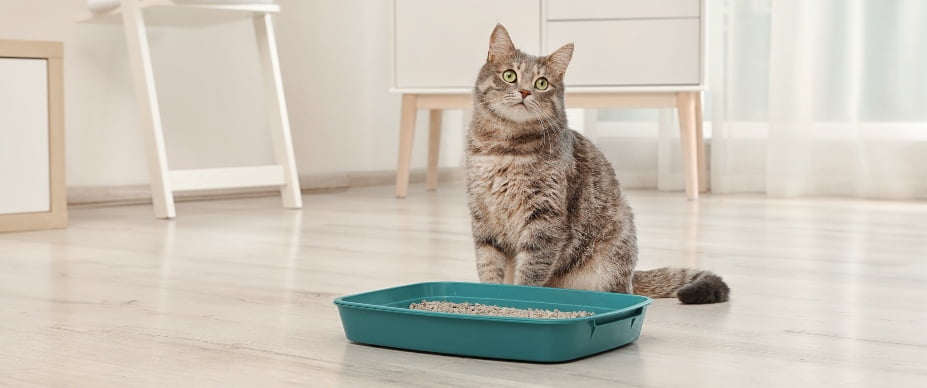Potty Training Your Cat: What You Need to Know

Potty training a cat can be a daunting task, but it can save you money and reduce the smell in your home. However, before you start the process, it’s important to understand the basics of potty training your cat. Unlike dogs, cats are generally trained to use a litter box indoors. Choosing the right litter box, litter type, and location are all key factors that can help make the process easier for both you and your cat.
Additionally, positive reinforcement is an essential aspect of training, and rewarding your cat for using the litter box can encourage and reinforce the behavior. With patience, commitment, and the right preparation, you can successfully potty train your cat. In this article, we’ll explore the steps you need to follow to ensure a successful potty training experience for you and your feline friend.
The Basics of Teaching Your Cat to Use the Litter Box
Teaching your cat to use the litter box is an essential part of potty training. Most cats instinctively know how to use the litter box, but if your cat is a kitten or has never used one before, you’ll need to show them the ropes.

1. Choose the Right Litter Box
Choosing the right litter box is crucial when it comes to potty training your cat. The litter box should be large enough for your cat to move around comfortably, with high sides to prevent litter from spilling out. The material of the litter box is also important, as some cats prefer certain textures over others. Consider factors such as durability, ease of cleaning, and odor control when choosing the litter box.
Additionally, you may want to consider getting a covered litter box to give your cat more privacy and prevent the spread of litter outside of the box. It’s also important to choose a litter box that matches the size of your cat. If the box is too small, it can be uncomfortable for your cat to move around, and if it’s too big, it may be difficult for your cat to climb in and out.
Another option to consider is getting a litter box with a built-in tray system, which can make cleaning up after your cat much easier. These systems typically come with a bottom tray that catches any litter that falls out of the box, making cleanup a breeze. Overall, choosing the right litter box can make a big difference in how successful your cat is with potty training, so it’s important to take your time and make the right choice.
2. Introduce Your Cat to the Litter Box
When introducing your cat to the litter box, make sure to place it in a quiet, private location where your cat can use it without disturbance. If your cat is a kitten, it may not know how to use the litter box. Gently place your kitten in the litter box and use its front paws to scratch the litter. This will help your kitten understand that the litter box is where it should go.
Additionally, it’s important to note that some cats may be hesitant to use a new litter box, especially if they’re used to a different type or location. To help your cat adjust, consider placing some of their old litter or waste in the new litter box. This will help familiarize them with the new space and encourage them to use it.
It’s also important to keep the litter box clean and free of waste. Cats are naturally clean animals and may avoid a dirty litter box. Make sure to scoop the litter box daily and thoroughly clean it once a week. This will help keep your cat happy and encourage them to use the litter box consistently.
In addition to keeping the litter box clean, it’s important to provide your cat with enough litter. The litter should be deep enough to allow your cat to dig and cover their waste. Generally, a depth of two to three inches is sufficient. Remember to add more litter as needed to maintain the appropriate depth.
3. Positive Reinforcement
Positive reinforcement is crucial for potty training your cat and reinforcing the behavior of using the litter box. Consistency is essential when training your cat. Praise and reward your cat with treats or affection whenever it successfully uses the litter box. This creates a strong association between using the litter box and receiving a reward, which encourages your cat to continue using it.
It is important to avoid punishing your cat for not using the litter box or having accidents. Punishment can cause fear and anxiety, which can further deter your cat from using the litter box. Instead, clean up any accidents immediately and try to identify the underlying cause of the problem. Consulting with your veterinarian may be necessary if your cat consistently refuses to use the litter box, as there may be underlying medical issues.
Remember that patience is essential when potty training your cat. With consistent positive reinforcement, your cat will eventually learn to use the litter box regularly.
4. Consistency is Key
When potty training your cat, consistency is key to success. Cats are creatures of habit and thrive on routine, so it’s important to establish consistent litter box habits right from the start. Ensure that the litter box is easily accessible and kept clean at all times. Cats can be very finicky about cleanliness, so if the litter box isn’t regularly cleaned, they may start to avoid it.
In addition to cleanliness, the location of the litter box should also be consistent. Once you have found a suitable location for the litter box, try to keep it there to avoid confusion for your cat. If you do need to move the litter box, do so gradually and in small increments, so your cat can easily adjust. It’s also important to keep the litter box away from any areas with heavy foot traffic or loud noises, as this can make your cat feel uneasy and reluctant to use the box.
By establishing a consistent routine for your cat’s litter box habits, you can make potty training a smoother and less stressful process for both you and your furry friend.
5. Addressing Issues
In some cases, even after consistent training, your cat may continue to have accidents outside of the litter box. If this happens, it’s important to identify and address the underlying issue. One common reason for this behavior is stress or anxiety, which can be triggered by changes in the home environment or social interactions with other pets or people. If you suspect stress may be the cause, consider providing your cat with a calming environment and reducing stressors as much as possible.
Another reason for litter box avoidance may be related to the type of litter or the location of the litter box. Some cats have preferences for the type of litter or the texture, so try different types to see what your cat prefers. The location of the litter box can also be an issue, as some cats prefer a more private area or a different location in the house. Experiment with different locations until you find one that works for your cat.
In rare cases, litter box avoidance can be a sign of a medical issue such as a urinary tract infection or blockage. If you have ruled out other potential causes and your cat continues to have accidents, it’s important to consult with your veterinarian to rule out any underlying medical issues.
Common Issues

Despite your best efforts, potty training your cat may not always go smoothly. Here are some common issues you may encounter and how to solve them:
- Litter Box Aversion: Your cat may avoid using the litter box if it is not cleaned regularly. Make sure to scoop out the waste daily and change the litter every 2-3 days. You may also want to try a self-cleaning litter box to keep it fresh.
- Accidents Outside the Litter Box: If your cat is having accidents outside the litter box, it may be due to stress or a medical issue. Consult with your veterinarian to rule out any underlying health issues, and try to reduce any sources of stress in your cat’s environment.
- Not Using the Litter Box at All: If your cat is not using the litter box at all, it may be due to a health issue or a dislike of the litter box. Consult with your veterinarian to rule out any underlying health issues, and try changing the litter or location of the litter box.
- Territorial Marking: If your cat is urinating outside the litter box to mark its territory, it may be due to stress or a lack of litter boxes in the home. Try providing multiple litter boxes in different locations and reducing any sources of stress in your cat’s environment.
Training Tips and Tricks
Potty training your cat can take time and patience, but with the right training tips and tricks, you can make the process smoother. Here are some additional tips to keep in mind:
- Use a Command: Choose a command, such as “go potty” or “use the litter box,” and use it consistently when showing your cat where to go.
- Timing is Key: Pay attention to when your cat typically needs to use the litter box, such as after meals or waking up from a nap. This is the best time to encourage your cat to use the litter box.
- Encourage Digging: Cats have a natural instinct to dig and cover their waste. Encourage this behavior by providing enough litter in the box.
- Keep it Clean: Clean the litter box regularly to keep it fresh and odor-free. Cats prefer clean litter boxes and may avoid using a dirty one.
- Provide Multiple Boxes: If you have multiple cats, provide each cat with their own litter box. This can help prevent territorial issues and ensure that each cat has access to a litter box when needed.
- Consider a Litter Box Enclosure: If your cat likes privacy, consider using a litter box enclosure. This can also help contain litter and reduce mess.
- Reward Good Behavior: Positive reinforcement is key to successful potty training. Whenever your cat uses the litter box, praise and reward them with treats or affection.
By following these tips, you can help your cat learn to use the litter box and avoid accidents in the house. Remember, every cat is different, so it’s important to be patient and consistent with your training approach.


